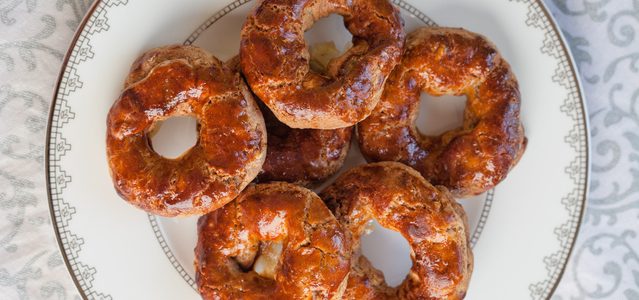From nougat, widespread throughout Italy, to the Neapolitan roccocò up to the now almost forgotten Roman pangiallo. Here is a roundup of traditional sweets to bring to the table on December 31 to welcome the new year in the best possible way
The menu of the New Year's Eve dinner is an even match between ancient customs is symbology. The table is a succession of courses to greet the year just ended. And what better way to curry favor in the days to come than to end dinner with a roundup of traditional New Year's sweets? Here are some suggestions to take inspiration from, among many recipes linked to the holiday period to welcome the coming year.
Traditional New Year's sweets, nougat wins over everyone
Even if their moment of glory is Christmas, Pandoro is panettone they often conquer the scene even on December 31st. Among the traditional New Year's desserts, however, there is another that deserves to be mentioned, the Nougat. From legendary origins, it is widespread throughout Italy. Among the most famous are those of Cremona and Alba, as well as the Sardinians and Sicilians. The recipe for making it at home is quite simple.
The ingredients are 150 grams of hazelnuts, 150 grams of almonds, 150 grams of walnuts, 150 grams of water, 240 grams of sugar, 160 grams of honey, two egg whites, a vanilla pod and pastry wafers. First, toast the dried fruit in the oven at 150 ° for about ten minutes. In a saucepan prepare the syrup with water and sugar. In another, heat the honey and vanilla, then pour them on the whipped egg whites. Also add the syrup and dried fruit, mix and pour all into one loaf pan covered with parchment paper, after placing the wafers on the bottom. Also cover the surface with the rest of the hosts and put in the fridge to rest for 10 hours.
Baroque San Silvestro with the Neapolitan roccocò
In Campania, among the typical sweets of the holidays, there are struffoli, balls of sweet dough, fried and dipped in honey. For the sweet tooth there is also the chocolate version. Always in the parts of Naples, during the Christmas period, and especially at New Year's Eve, the rococo, rather hard donuts to be served with a fortified wine, such as i cantucci Tuscan.
For about twenty Rococo you need a kilo of 00 flour, 900 grams of sugar, 700 grams of peeled almonds, 100 grams of candied fruit, 50 grams of honey, 100 ml of warm water, 200 ml of orange juice, the grated zest of one orange and one lemon, 15 grams of pisto (a mixture of spices such as cinnamon, nutmeg and cloves), a pinch of baking soda, a pinch of salt and a vanilla bean. For to decorate a couple of eggs, a spoonful of sugar and 100 grams of almonds.
First, toast the almonds and let them cool. With flour create a fountain and in the center pour the sugar, the chopped almonds, the orange and lemon peels, the pisto, the candied fruit and the grated vanilla. In a saucepan, slightly heat the filtered orange juice, remove it from the heat, add the honey and baking soda and gradually incorporate it into the dough. Once he has reached one soft but compact texture, get some snakes, shape the donuts and place them on a baking tray covered with parchment paper. Before baking at 150 ° for 30-40 minutes, decorate the surface of the rococo with almonds, brush with the yolk and sprinkle with sugar. Remove them from the pan when they are completely cold.
Roman pangiallo, the propitiatory sweet with a golden crust
Dried fruit also protagonist of Roman pangiallo. A dessert from golden crust, one almost lost recipe which was usually prepared on the day of the winter solstice as a sign of good luck. The ingredients are 200 grams of flour, 300 grams of raisins, 200 grams of almonds, 200 grams of walnuts, 200 grams of peeled hazelnuts, 200 grams of honey, 100 grams of pine nuts, 100 grams of candied fruit, 150 grams of chocolate, a spoon of bitter cocoa and the grated peel of an orange. For the icing two tablespoons of flour, two tablespoons of extra virgin olive oil, a sachet of saffron and water.
Soak the raisins for 30 minutes. In a saucepan, heat the honey and add the orange peel. Chop the nuts and chocolate and put them in a bowl with candied fruit, squeezed raisins and cocoa. Pour in the honey and gradually add the flour as well. Mix everything, divide the mixture into four loaves and put them to rest in the oven for a couple of hours. For the glaze, heat the flour, oil and saffron dissolved in a little water in a saucepan. Then add enough water to form one fluid batter with which to brush the loaves. Then bake at 180 degrees for about forty minutes.
This recipe has already been read 172 times!
